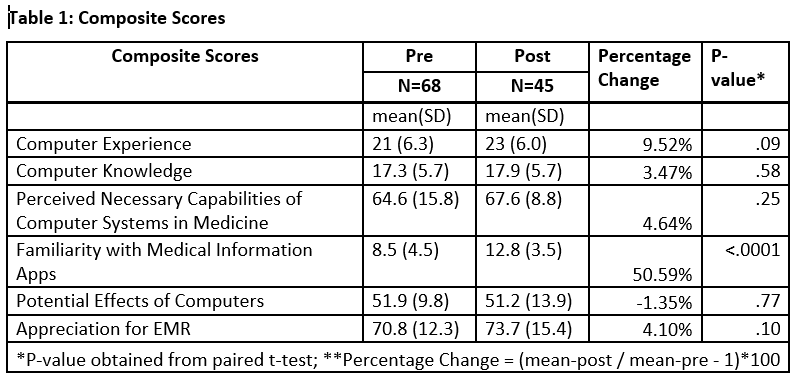
Fatima Barnes
Howard University, USA
Title: Mobile access to clinical information at the point of care
Biography
Biography: Fatima Barnes
Abstract
Objectives: Using library subscriptions and accessible on handheld devices, this study sought to promote authoritative health information apps, and evidence-based point-of-care resources.
Methods: Three cohorts of internal medicine residents were issued iPads at the beginning of their second year, and were trained to skilfully access resources from the digital library.
Pre- and post-intervention surveys were respectively administered at the beginning of the second year and end of the third year of training. The residents’ computer experience and computer knowledge was assessed. Additionally, before and after formal introduction to iPads, perceptions on the use of computers to access clinical information were assessed. Survey responses were compared using two sample methods and summarized through descriptive statistics.
Results: Sixty-eight residents completed the pre-survey questionnaires and 45 completed the post-surveys. There were significant improvements in the residents’ level of computer experience, and familiarity with medical apps. Furthermore, there was increased knowledge obtained in accessing clinical information through electronic medical records. Residents positively perceived the potential effects of computers and electronic medical records in medicine.
Conclusion: Study findings suggested that health science libraries can be instrumental in providing search skills to health professionals, especially residents in training. Participants showed appreciation of iPads and library support that facilitated successful completion of their related tasks. Replicating this study with a larger sample derived from multiple sites is recommended for future studies. Participation of mid-level healthcare professionals, such as Physician Assistants and Nurse Practitioners is suggested.

Recent Publications:
- Boulos MNK, Wheeler S, Tavares C, Jones R. How smartphones are changing the face of mobile and participatory healthcare: An overview, with example from eCAALYX. Biomedical engineering online. 2011;10(1):24-24. doi: 10.1186/1475-925X-10-24.
- Osheroff JA, Teich JM, Middleton B, Steen EB, Wright A, Detmer DE. A roadmap for national action on clinical decision support. Journal of the American Medical Informatics Association : JAMIA. 2007;14(2):141-145. doi: 10.1197/jamia.M2334.
- Lumsden CJ, Byrne-Davis LMT, Mooney JS, Sandars J. Using mobile devices for teaching and learning in clinical medicine. Archives of disease in childhood-Education & practice edition. 2015:edpract-2014-306620.
- Chatterley T, Chojecki D. Personal digital assistant usage among undergraduate medical students: Exploring trends, barriers, and the advent of smartphones. Journal of the Medical Library Association: JMLA. 2010;98(2):157-160. doi: 10.3163/1536-5050.98.2.008.
- Tews M, Brennan K, Begaz T, Treat R. Medical student case presentation performance and perception when using mobile learning technology in the emergency department. Medical education online. 2011;16:1-7. doi: 10.3402/meo.v16i0.7327.

